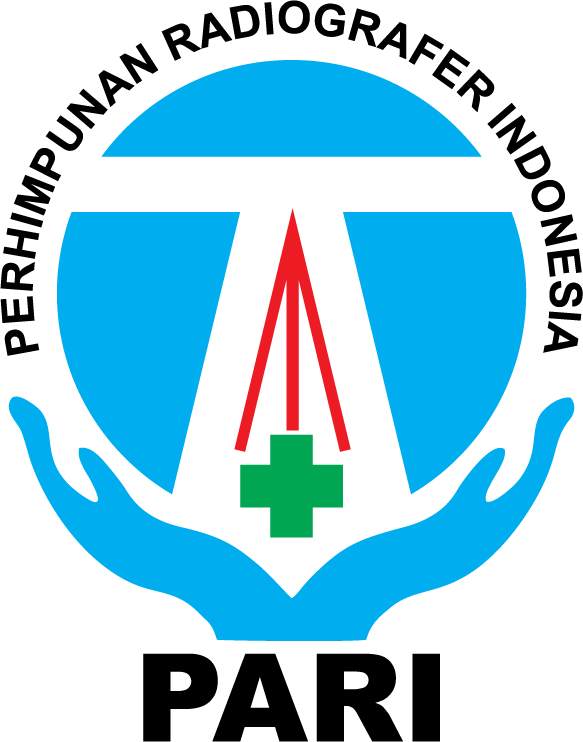Analisa Penerimaan Dosis Radiasi Permukaan Kulit pada Pemeriksaan Radiografi Thorax Proyeksi Postero Anterior (PA)
Abstract
Background:Increasing tube voltage which balanced with decreasing tube current and exposure time, it can decrease patient dose. base on optimization principle of radiation protection and radiation safety, it must be some effort in order to make patient dose minimally as it needed to get diagnostic information. The purpose of this research are to find out radiation dose on kV which usually use in Radiology Departement, radiation dose on kV with higher than usual, and two find out radiation dose acceptance on both of technique was appropriate with reference dose that set by BAPETEN.
Methods : Type of this research was quantitative research with experimental approach. This research took place in laboratory 2 JTRR Semarang. This research had been done by illumination chest phantom which completed with TLD (Thermoluminisense Dosimeter) placed correct on central point on MSP (Mid Sagital Plane) as level as angulus inferior scapulae. Analyze data had been shown used tables by average accounting, compare between acceptance radiation dose on kV which usually use in Radiology Departement and on kV with higher than usual, and compare result radiation dose with reference dose that set by BAPETEN.
Results :The result of this research shown that there was difference acceptance radiation dose entrance skin on chest examination in postero-anterion projection on tube voltage which usually use in Radiology Departement, radiation dose on tube voltage with higher than usual. The average value of radiation dose on kV usually use in Radiology Departement was 0,059 mGy, while on tube voltage with higher than usual the average value of radiation dose was 0.020 mGy. The result of testing that used kV with higher than usual, acceptance radiation dose entrance skin which accepted was lower than on tube voltage usually use in Radiology Departement. The result of radiation dose on tube voltage usually use in Radiology Departement although used tube voltage with higher than usual, its value were lower than reference dose, it was 0,4 mGy that set by BAPETEN.
Conclusion : Based on these results, using a higher tube voltage than is usually very useful to reduce the radiation dose received by the patient, then this technique should be applied in Radiology for the examination of the thorax with the PA that has a projection plane X-ray modality with high capability above 100 kV.
Keywords
Full Text:
PDFDOI: https://doi.org/10.31983/jimed.v1i1.3147
Article Metrics
Refbacks
- There are currently no refbacks.
JURNAL IMEJING DIAGNOSTIK by http://ejournal.poltekkes-smg.ac.id/ojs/index.php/jimed is licensed under a Creative Commons Attribution-ShareAlike 4.0 International License.

.png)
.png)
.png)
.png)
.png)
.png)
.png)











